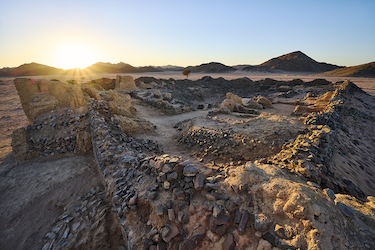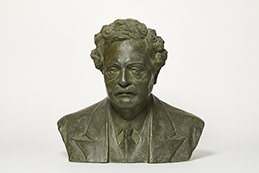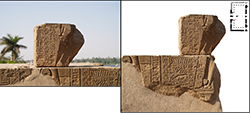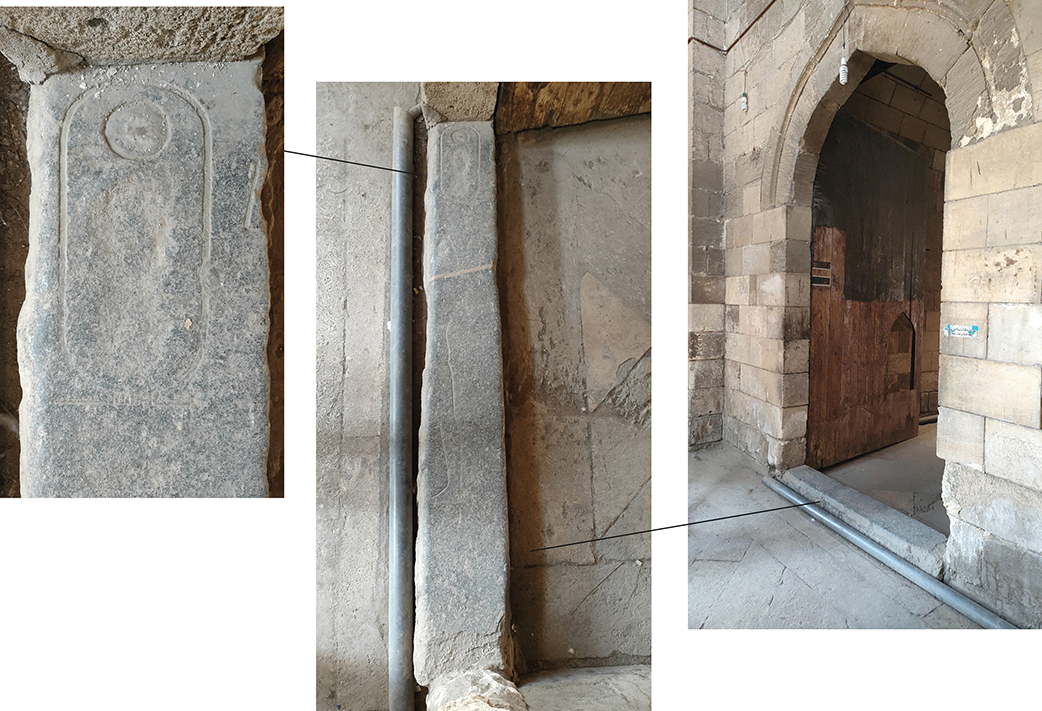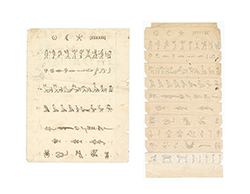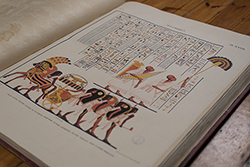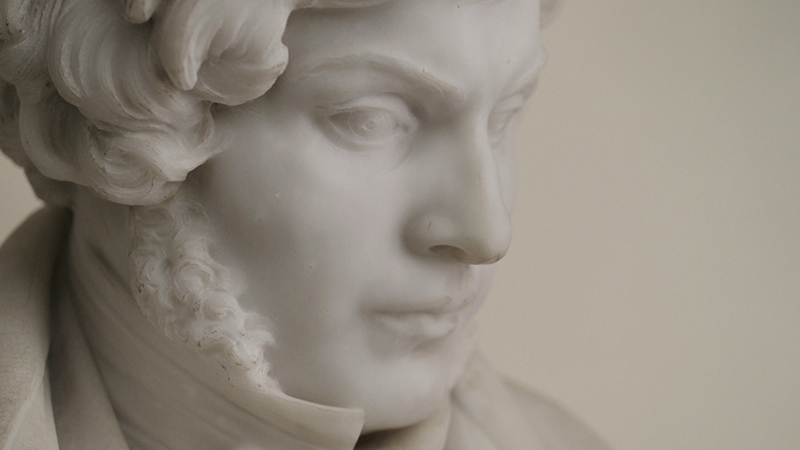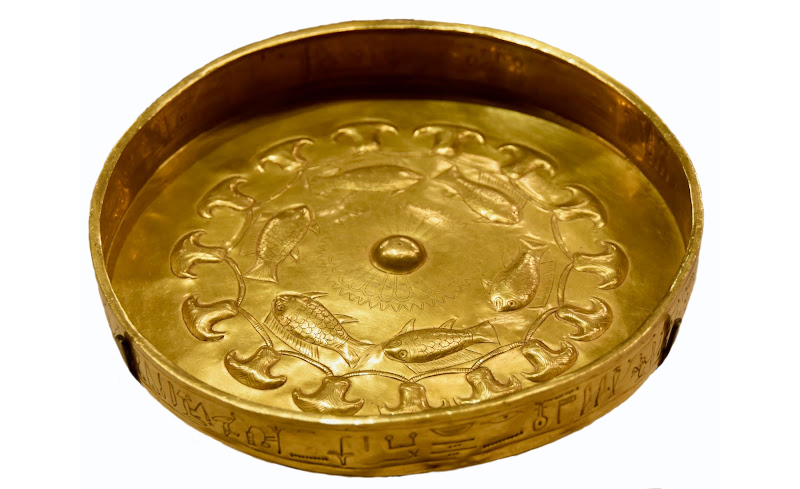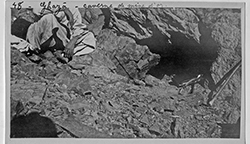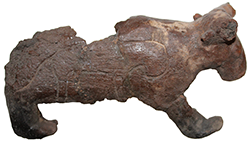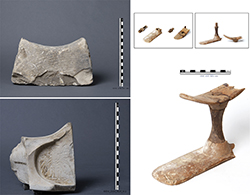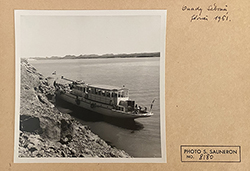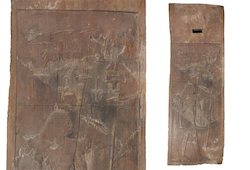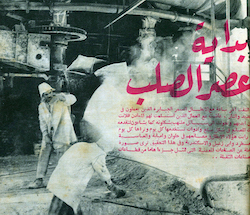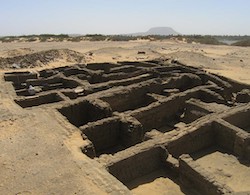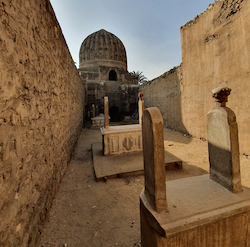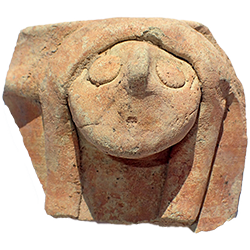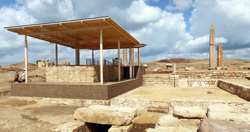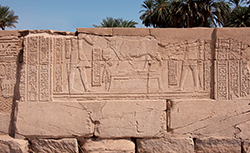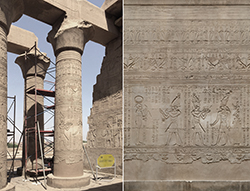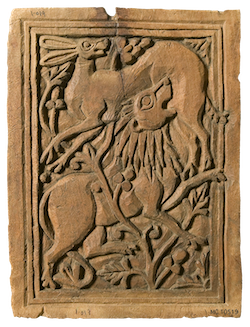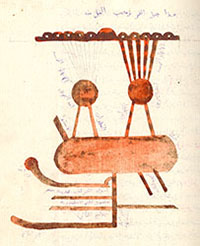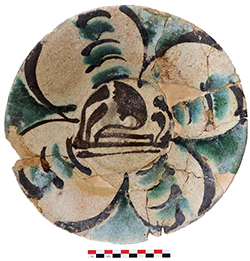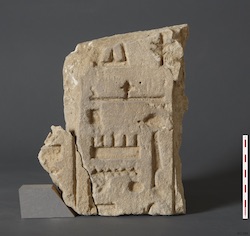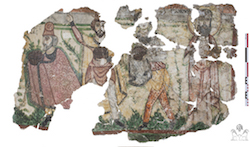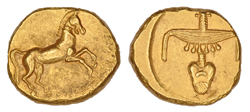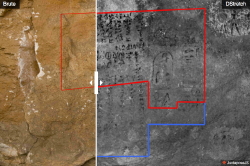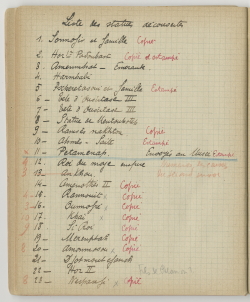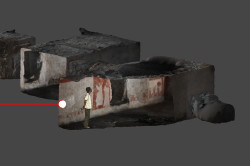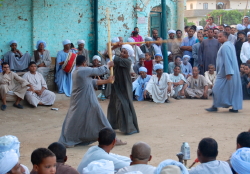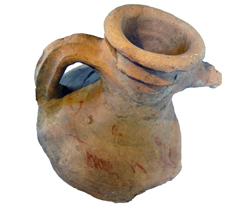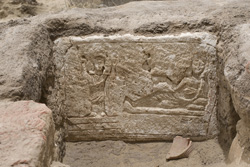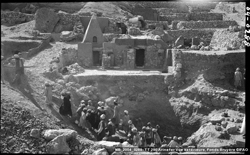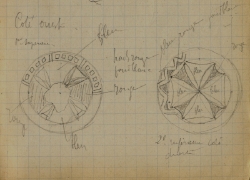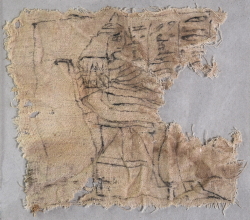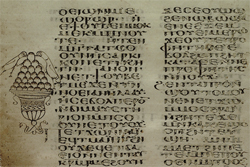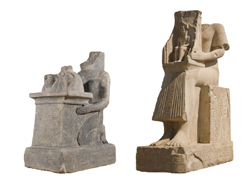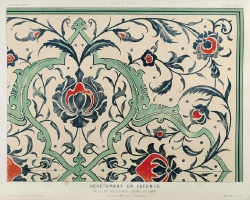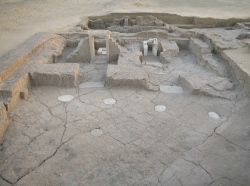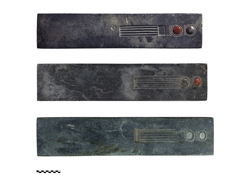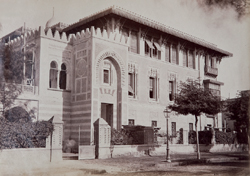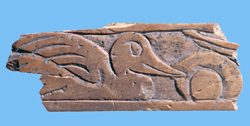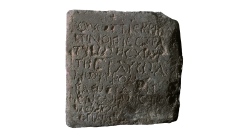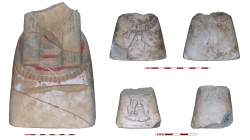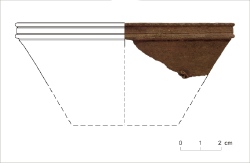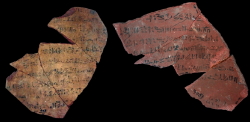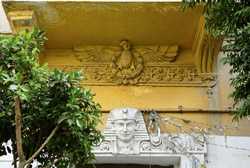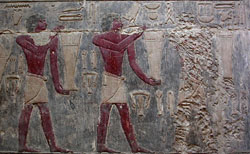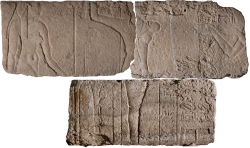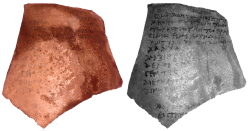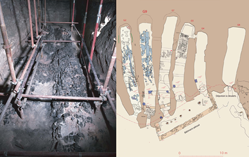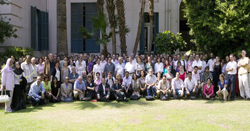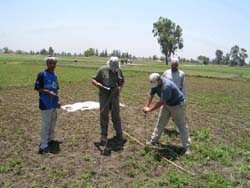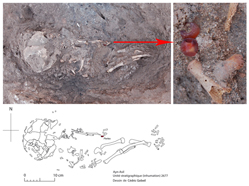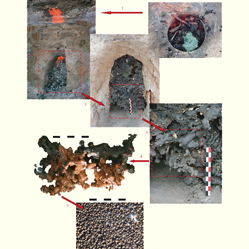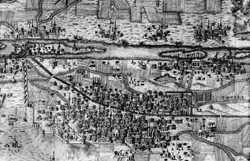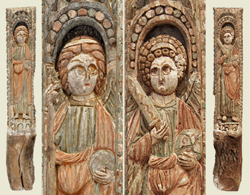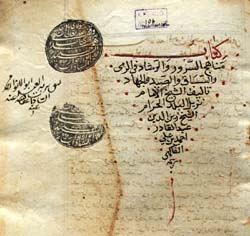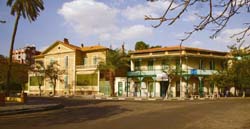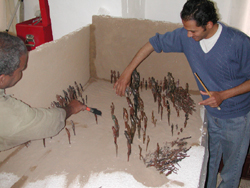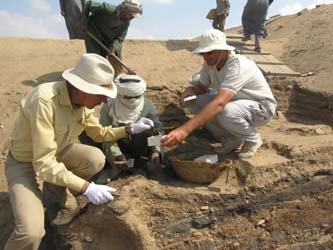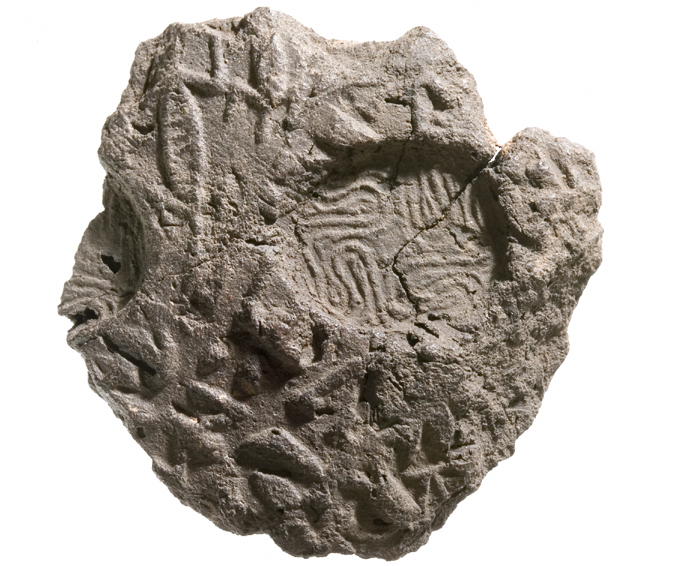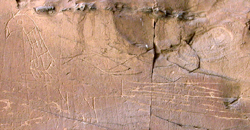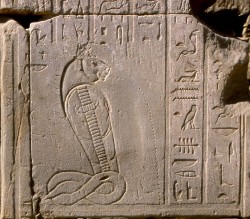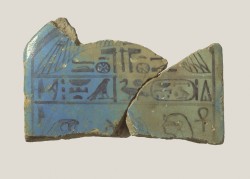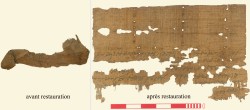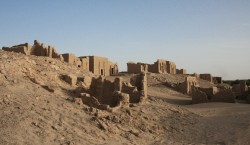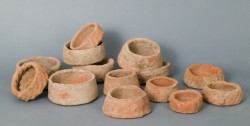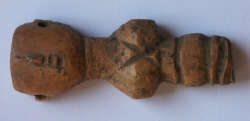Une image, un commentaire…
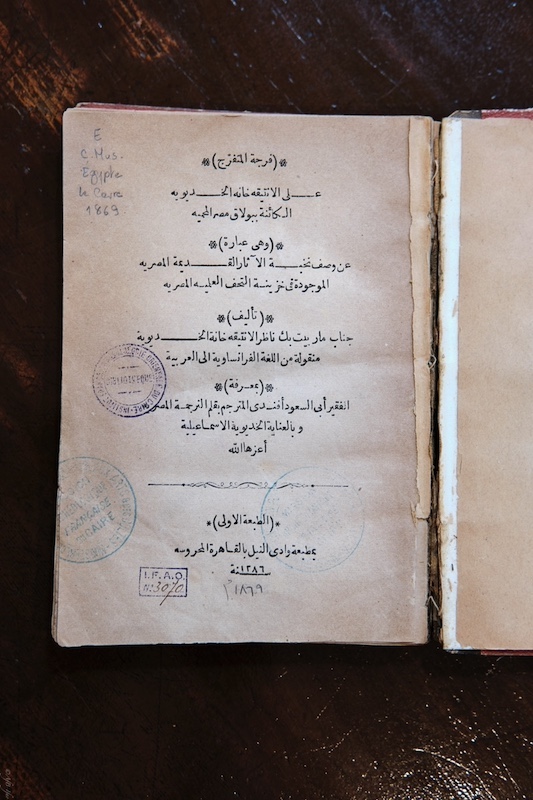
La traduction en arabe du guide du musée de Boulaq d’Auguste Mariette
La traduction en arabe par ʿAbd Allāh Abū al-Suʿūd du guide du musée de Boulaq d’Auguste Mariette.
Une trace de l’égyptologie en arabe au XIXe siècle
Fatma Keshk, Boursière Postdoctorale (Ifao-DAIK)
Le musée de Boulaq est fondé par Auguste Mariette (1821-1881) en 1859, près de ce qui est alors, au Caire, l’un des principaux ports du Nil. L'emplacement du musée aurait été choisi afin de faciliter le transport des antiquités via le port situé à proximité (Godoli et Volait 2010, 23). Ce musée est le deuxième musée dont la création est soutenue par l'État égyptien, qui souhaite rassembler les antiquités égyptiennes les plus anciennes dans une seule collection. Auparavant, le musée Al-Azbakiyya avait été lancé par Muḥammad ʿAlī Pasha (1769-1849) au début des années 1830 (Keshk 2022). En 1868, Auguste Mariette publie le guide du musée, qui est l'un des premiers du genre en Égypte (Mariette 1868). Il y propose une description des principales œuvres du musée ainsi qu'un itinéraire de visite, où les noms des galeries du musée, ainsi que l'emplacement des pièces décrites, sont indiqués.
Le guide du musée de Mariette est traduit du français à l'arabe par ʿAbd Allāh Abū al-Suʿūd (1820- 1878) en 1869. Éditeur d'un important journal égyptien, Wādī al-Nīl, ʿAbd Allāh Abū al-Suʿūd est alors une figure éminente de la scène culturelle égyptienne.
Né à Dahshur, diplômé de l'école de langues et de traduction fondée par Rifāʿa al-Ṭahṭāwī (1801-1873) au début des années 1830, il succède à ce dernier comme chef du département de traduction des écoles khédiviales. Il est vite reconnu pour ses talents d’éditeur, de journaliste, de poète et de traducteur. Il s’intéresse à l’histoire du pays – déjà, à l’école de langues, il avait suivi des cours d’histoire, notamment sur l'histoire de l'Égypte ancienne. Tout au long de sa carrière, il continue à faire montre d’un grand intérêt pour l’histoire ancienne de l’Égypte. Plus tard, le khédive Ismāʿīl le charge de la traduction en arabe du livre de Mariette sur l'histoire de l'Égypte ancienne, qui est également destiné à être enseigné dans les écoles égyptiennes. Aperçu de l’histoire d’Égypte depuis les temps les plus reculés jusqu'à la conquête musulmane : ouvrage destiné aux écoles spéciales de l’Égypte, Alexandrie, Mourès, 1864 est traduit sous le titre de : Kitāb Ta’rīḫ qudamā’ al-miṣriyyīn (Ikram et Omar 2021, 31).
La traduction en arabe du guide du musée de ʿAbd Allāh Abū al-Suʿūd, imprimée dans sa propre imprimerie (Maṭbaʿat Wādī al-Nīl), est représentative de son époque. ʿAbd Allāh Abū al-Suʿūd adapte le texte arabe pour mieux être compris du public égyptien qu’il vise prioritairement.
D’ailleurs, le titre en arabe Furǧat al-mutafariǧ ʿalā al-antīqa ḫāna al-ḫidīwiyya al-kā’ina bi-būlāq Miṣr al-maḥmiyya renvoie à la pratique de la rime assonancée et rimée (saǧʿ), qui était courante dans la prose classique, et dont l’usage a largement perduré jusqu’au XIXe siècle. En outre, la page de titre signale qu’il s'agit d'un guide décrivant une sélection d'antiquités du musée, tout en mettant en avant l'auteur original (Mariette Bey), nāẓir (directeur) de la Khedivial Antiqua Khana (musée).
La traduction du guide de Mariette fait date. Elle est aussi une trace de la perception, par des égyptiens lettrés, de leur passé. D’ailleurs, dans son introduction de traducteur, ʿAbd Allāh Abū al-Suʿūd parle de la gloire de l'Égypte ancienne et de ses monuments. Il souligne que les antiquités de ce musée n'ont pas été achetées, mais ont plutôt été découvertes lors de fouilles archéologiques entreprises sous le patronage du Khédive.
La publication de ce guide, en 1869, est un indicateur, parmi d'autres, d'un intérêt des élites cultivées, et peut-être aussi d'un intérêt de l’ensemble du public égyptien, pour les connaissances égyptologiques.
The Translation in Arabic by ʿAbd Allāh Abū al-Suʿūd of the Bulaq Museum Guide by Auguste Mariette
A trace of Egyptology in Arabic in 19th Century Egypt
Fatma Keshk, Postdoctoral Fellow (Ifao-DAIK)
The Bulaq Museum was founded by Auguste Mariette (1821-1881) in 1859, near one of the major Nile harbors of Cairo at the time. The location of the museum may have been chosen in order to provide an easy transportation of the antiquities to the museum through the harbor located nearby (Godoli and Volait 2010, 23). This museum was the second one supported by the Egyptian state, whose aim was gathering ancient Egyptian antiquities in one collection, after Al-Azbakiyya Museum that was initiated by Muḥammad ʿAlī Pasha (1769-1849) in the early 1830s (Keshk 2022). In 1868, Auguste Mariette (1821-1881), founder of the Bulaq Museum, published one of the first visitor guides to an antiquities museum in Egypt (Mariette 1868). In this guide, we find a description of the museum’s main artifacts, along with a visit itinerary, whereby the names of the museum’s galleries, as well as the location of the described items are shown.
In 1869, the museum guide of Mariette was translated from French to Arabic by ʿAbd Allāh Abū al-Suʿūd (1820-1878), who was the editor of a significant Egyptian journal at the time: Wādī al-Nīl, and who was a prominent figure in the cultural scene in Egypt’s 19th century.
Born in Dahshur, he was a graduate of the language and translation school founded by Rifāʿa al-Ṭahṭāwī (1801-1873) in the early 1830s and follows him as head of the translation department at the khedivial schools. He was then known as a multi-talented author, editor, journalist, poet and translator. It turns out, that at that language school, he also attended history classes including a class on ancient Egyptian history. Abū al-Suʿūd’s interest in ancient Egyptian history is clear throughout his career. Later, he was commissioned by Khedive Ismāʿīl to translate Mariette’s book on ancient Egyptian history that was also intended to be taught at Egyptian schools: Aperçu de l’histoire d’Égypte depuis les temps les plus reculés jusqu'à la conquête musulmane: ouvrage destiné aux écoles spéciales de l’Égypte, Alexandrie, Mourès, 1864 with the title of: Kitāb Ta’rīḫ qudamā’ al-miṣriyyīn (Ikram and Omar 2021, 31).
Abū al-Suʿūd’s translation of the museum guide, printed at his own print house (Maṭbaʿat Wādī al-Nīl), is representative of its time. In order to communicate the contents of the museum in a style and language that is congruent with the knowledge of the Egyptian audience, which is the primary target audience of his Arabic version, the contents of the original French version were culturally adapted by Abū al-Suʿūd.
The Arabic title Furǧat al-mutafariǧ ʿalā al-antīqa ḫāna al-ḫidīwiyya al-kā’ina bi-būlāq Miṣr al-maḥmiyya rhymes (saǧʿ), a writing practice that echoes with the tradition of ancient Arabic books; a tradition that continued until the 19th century. The title page then highlights that it is a guide that describes a selection of antiquities from the museum, while highlighting the original author (Mariette Bey), nāẓir (director) of the Khedivial Antiqua Khana (museum).
The translation of Mariette's guide is a landmark. It is also a trace of the perception, by literate Egyptians, of their past. He highlights to the reader that the antiquities in this museum were not bought, but were rather discovered through archaeological excavations, undertaken under the patronage of the Khedive in all of Egypt. In his translator’s introduction to the guide, Abū al-Suʿūd talks about the glory of ancient Egypt and its monuments.
The publication of this guide, in 1869, is an indicator, among others, of an interest of cultivated elites, and perhaps also of an interest of the entire Egyptian public, in Egyptological knowledge.
ترجمة عبد الله أبو السعود لدليل متحف بولاق لأوجست مارييت
علامة للإيجيبتولوجي بالعربي في مصر القرن التاسع عشر
،د. فاطمة كشك، باحثة ما بعد الدكتوراه بالمعهد الفرنسي للآثار الشرقية والمعهد الألماني للآثار
في عام ١٨٥٩ قام أوجست مارييت (١٨٢١-١٨٨١) بتأسيس متحف بولاق بالقرب من أحد الموانئ الرئيسية لنهر النيل في القاهرة في ذلك الوقت. ربما تم اختيار موقع المتحف من أجل تسهيل نقل الآثار ومعدات المتحف من خلال الميناء. كان هذا المتحف هو المتحف الثاني المدعوم من قبل الدولة المصرية، الذي كان هدفه جمع الآثار المصرية القديمة في مجموعة واحدة، بعد متحف الأزبكية الذي دعا إلى إنشائه محمد علي باشا (١٧٦٩-١٨٤٩) في أوائل الثلاثينيات من القرن التاسع عشر. في عام ١٨٦٨، قام أوجست مارييت بنشر واحد من أول أدلة الزوار لمتحف آثار في مصر. في هذا الدليل نجد وصفًا للقطع الأثرية الرئيسية في المتحف، بالإضافة إلى مسار الزيارة، حيث يتم تحديد أسماء صالات المتحف، وكذلك موقع القطع الموصوفة.
في عام ١٨٦٩، قام عبد الله أبو السعود (١٨٢٠-١٨٧٨) بترجمة دليل مارييت من الفرنسية إلى العربية. كان أبو السعود محررًا لصحيفة مصرية هامة في ذلك الوقت وهي مجلة "وادي النيل"، وكان شخصية بارزة في الساحة الثقافية في مصر في القرن التاسع عشر.
ولد أبو السعود في دهشور، وكان خريجًا لمدرسة اللغات والترجمة التي أسسها رفاعة الطهطاوي (١٨٠١-١٨٧٣) في بداية الثلاثينيات من القرن التاسع عشر. وبعد وفاة الطهطاوي، خلفه أبو السعود كرئيس لقسم الترجمة في المدارس الخديوية. وسرعان ما عُرف أبو السعود بمواهبة المتعددة ككاتب ومحرر وصحفي وشاعر ومترجم. وفي مدرسة الترجمة، حضر دروسًا في التاريخ، بما في ذلك تاريخ مصر القديمة حيث كان اهتمامه بتاريخ مصر القديمة واضحًا طوال حياته المهنية. وفي وقت لاحق، كلفه الخديوي إسماعيل بترجمة كتاب مارييت عن تاريخ مصر القديمة "كتاب تأريخ قدماء المصريين" بهدف تدريسه في المدارس المصرية.
تعتبر ترجمة عبد الله أبو السعود لدليل المتحف، والتي تمت طباعتها في مطبعته الخاصة (مطبعة وادي النيل) تمثيلًا واضحًا لزمانها. فمن أجل تفسير المحتويات المتواجدة في المتحف بأسلوب ولغة يتناسبان مع معرفة الجمهور المصري المحلي آنذاك، والذي يُعتبر الجمهور المستهدف الأساسي للنسخة العربية من الدليل، قام أبو السعود بعملية تبسيط ثقافي لمحتويات النسخة الفرنسية الأصلية. فعلى سبيل المثال، يتناغم عنوان النسخة العربية "فرجة المتفرج على الأنتيقة خانة الخديوية الكائنة ببولاق مصر المحمية" بطريقة السجع، وهي ممارسة كتابية تتماشى مع تقاليد عناوين الكتب العربية القديمة التي استمرت حتى القرن التاسع عشر. كما توضح صفحة العنوان أنه دليل يصف مجموعة من القطع الأثرية في المتحف، مع التأكيد على توضيح اسم كاتب النسخة الأصلية (مارييت بيه)، "ناظر" أي مدير لدار الآثار الخديوية (المتحف).
تعتبر ترجمة دليل مارييت علامة بارزة. كما تـُعد دلالة لرؤية المصريين المتعلمين لماضيهم. في مقدمته كمترجم للدليل، يتحدث أبو السعود عن عظمة مصر القديمة وآثارها. ويؤكد للقارئ أن الآثار في هذا المتحف لم يتم شراؤها، بل تم اكتشافها من خلال حفائر أثرية تمت برعاية الخديوي. نشر هذا الدليل في عام ١٨٦٩ يُعد مؤشرًا من بين مؤشرات أخرى على اهتمام الطبقات المثقفة بل وربما اهتمام عموم المصريين بمعرفة علم المصريات.
References
- Ikram, Salima and Amr Omar 2021. Egypt. In Bednarski, Andrew, Salima Ikram, and Aidan Dodson (eds), A history of world Egyptology, 25-67. Cambridge: Cambridge University Press.
- Godoli, Ezio and Mercedes Volait (eds.) 2010. Concours pour le musée des Antiquités égyptiennes du Caire, 1895, Éditions Picard.
- Keshk, Fatma 2022. Rifa'a al-Tahtawi, l'antico Egitto e il Museo di Azbakiyya. In Ferraris, Enrico (ed.), Aida: figlia di due mondi, 56-61. Modena: Franco Cosimo Panini.
- Mariette, Auguste 1868. Une visite au Musée de Boulaq: ou description des principaux monuments conservés dans les salles de cet établissement / par Mariette-Bey. Traduit du français en arabe par Abou So’oud Effendi. - Le Caire : Impr. de la "Vallée du Nil".
- Soler, Renaud 2019. Une autre historie de la civilization : comment Rifa’a al-Tahtawi repensa l’histoire de l’Egypte dans les années 1860, Annales Histoire Sciences Sociales 74(2):267-296
- Colla, Elliot 2007. Conflicted antiquities: Egyptology, Egyptomania, Egyptian modernity. Durham, NC; London: Duke University Press.
Images précédentes:
